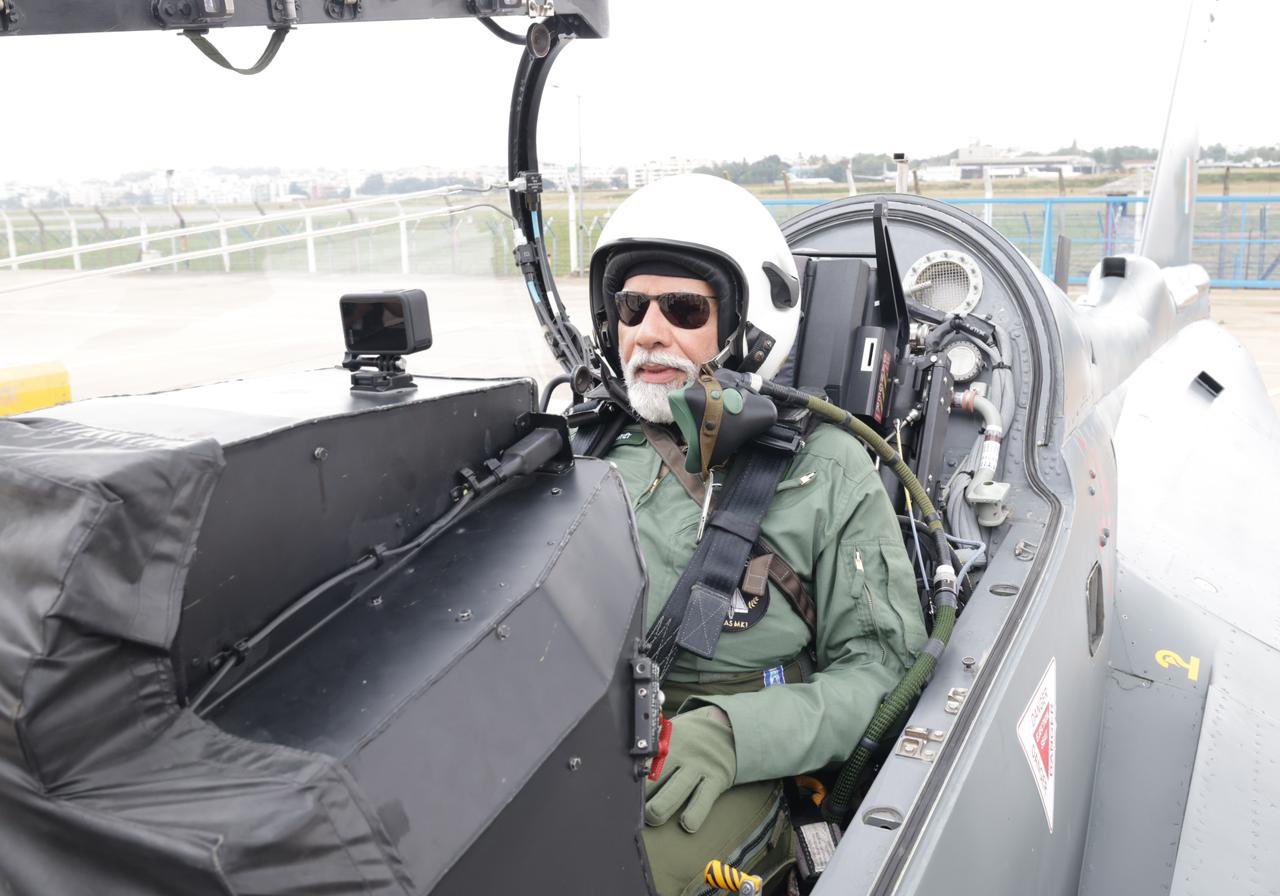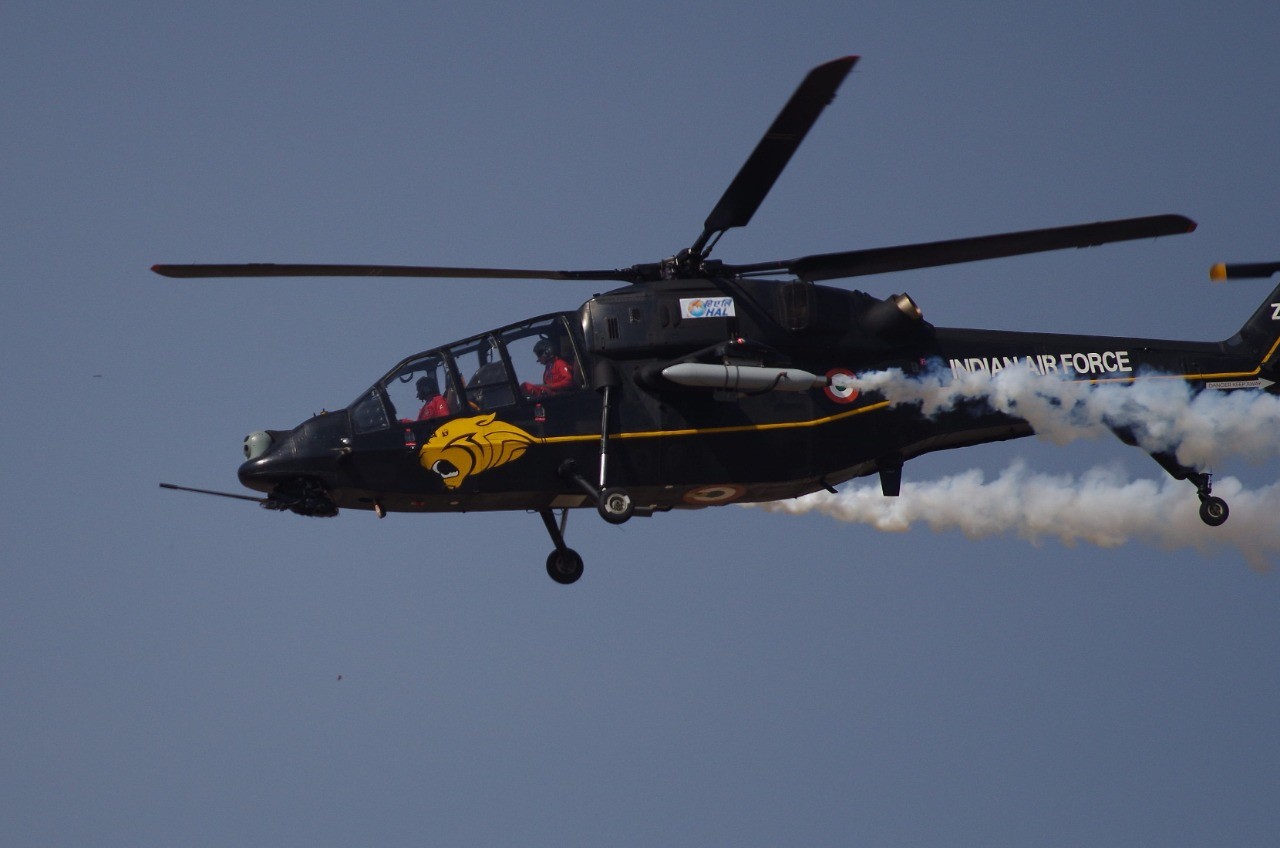India’s indigenous light combat helicopter (LCH), Prachand (meaning Fierce), is reaching the finishing line to finalize a deal with the Nigerian Army.
If the deal comes through, it will be a breakthrough export deal for the Indian aerospace maker. The plus point will be that the homegrown chopper will have won the contract, defeating the Turkish T-129 ATAK helicopter and European Tiger HAD multi-role helicopter.
Hindustan Aeronautics Limited (HAL) is confident that it might have the first deal in the helicopter segment rather than the fighter jet segment. An official told the EurAsian Times that the announcement can be expected soon.
India has been extending credit lines to several countries which are potential defense buyers. India and Nigeria had inked an unprecedented US$1 billion deal to boost the defense industry in the African nation.
India has extended a line of credit of around US$14 billion to 42 African Union countries. While most of it will be used for infrastructure development, India has shown openness to using lines of credit for defense deals.
India has long-standing cooperation with African countries and provides training to military personnel from many African countries. Besides, India contributes to peacekeeping troops in Africa. Mutual trust between India and African countries makes it easier for India to sell its weapons.
The Nigerian Army has been looking to acquire Combat helicopters to bolster its firepower and counterterrorism capabilities. The country is seeking approximately 12 twin-engine attack helicopters to support its military operations.
In 2020, the Nigerian Army and Air Force indicated an interest in acquiring combat helicopters. The Army is keen on attack helicopters to give air support to its field-deployed troops in the northeastern region.
The helicopters will be required to conduct ground attacks and fend off air attacks from small drones. They would also be conducting armed escort and tank plinking.
The Nigerian Army blamed the lack of airpower for the prolonged battle with the Boko Haram insurgents. The service also contended that it needed its own “air force to deal with the insurgents swiftly.”
Besides LCH, Nigeria has evaluated several global manufacturers, including HAL, Airbus, and Turkey’s TAI.
Among the contenders, HAL’s LCH stands out for its versatility and proven performance. TAI’s T-129 ATAK helicopter, powered by LHTEC T800-4A turboshaft engines, and Airbus’s Tiger HAD, a multi-role attack helicopter designed for various combat scenarios, also stand out. Each of these options offers distinct advantages, reflecting the competitive nature of the global defense market.
Turkish TAI has offered the T-129 ATAK chopper at a price of approximately US$45 million per piece. It is a five-ton, twin-engine, multi-role attack helicopter based on the A129 Mangusta. It was originally produced under license from the Italian-British company AgustaWestland, which is now Leonardo Helicopters.
Airbus is also competing with its Tiger HAD multi-role helicopter, designed to perform armed reconnaissance, air or ground escort, air-to-air combat, ground fire support, destruction, and anti-tank warfare. Its price is estimated to be around US$68 million.
Contrary to this, Indian LCH can also be deployed in various roles, including tracking slow-moving aerial targets, insurgency, destroying enemy defenses, search and rescue, anti-tank, and scouting. It costs approximately US$17 million, one-third of the price of the Turkish T-129 ATAK helicopter.
Wing Commander Saurabh Sharma, who is also the Flight Commander of Dhanush Squadron 143 Helicopter Unit, which operates these helicopters, described his experience flying the machines: “To quote a famous boxer, Mohammed Ali, all I can say is this machine flies like a butterfly and stings like a bee.”
In the last year, several countries have shown interest in the fleet of Indian-made helicopters.
Former HAL Chief Managing Director CB Ananthakrishnan has been more hopeful of getting a helicopter export before the indigenous Light Combat Aircraft (LCA) Tejas. This is despite the present Indian government throwing its weight behind LCA ‘Tejas’ through an unprecedented sortie in the aircraft by an Indian Prime Minister.

In an interview, the HAL CMD said that the LCA ‘Tejas’ being the best in its category has evoked a lot of interest from foreign buyers.
“Five countries have shown interest. With Argentina, it is still under discussion. Talks with the Philippines are in advanced stages. With Egypt also, we are in discussion. And talks with Nigeria have gained momentum,” Ananthakrishnan said, without elaborating if the specific countries were interested in the fighter jets or the helicopters. “We will have a breakthrough sooner or later. Helicopters will have more demand,” the HAL CMD added.
The HAL’s capacity is 30 helicopters per annum. When demand is at its peak, the HAL will try to scale it up to 60 helicopters, and plans are in the offing to ramp up production to 90 helicopters per year.
LCH, along with LCA, is one of the flagship products designated for exports from the Indian aerospace maker Hindustan Aeronautics Limited (HAL). Argentina and Nigeria have shown interest in rotary-wing aircraft. Argentina signed a letter of intent to purchase 20 ‘Prachand’ helicopters.
The LCH Prachand is India’s first indigenous multi-role combat helicopter, with potent ground attack and aerial combat capability. It has been customized to operate in deserts and mountains, as required by the Indian armed forces.
The Indian Army and the IAF inducted the LCH into their fleet in 2022. The army intends to deploy these aircraft on its borders with Pakistan and China.
LCH Prachand is produced in collaboration between HAL and France’s Safran company. It is powered by twin Shakti engines.
The helicopter can fly at a maximum speed of 288 mph, has a combat radius of 500 km, and a service ceiling of 21,000 feet, which means it can operate at the world’s highest battleground – the Siachen Glacier.

Photo Courtesy: Vijainder K Thakur
The pilot and co-pilot, known as the Weapon Systems Operator (WSO), sit in tandem in a glass cockpit and are protected by armored panels.
The weapon complement includes a 20mm nose gun in the front, capable of firing 800 rounds per minute from a range of up to 2 km. A 70mm rocket pod is mounted on the stub wing, with a direct firing range of up to 4 km and indirect up to 8 km.
Above the gun is an electro-optical pod for long-range day and night surveillance and target tracking. Anti-tank guided missile ‘Dhruvastra’ and French air-to-air missile ‘Mistral-2’ have a maximum interception range of 6.5 km.
During its testing, the LCH landed at a forward base in the region, 4,700 meters above sea level, and with a 500-kg load. It is the only helicopter operating at 5,000 meters with a considerable load of weapons and fuel.




